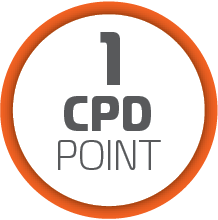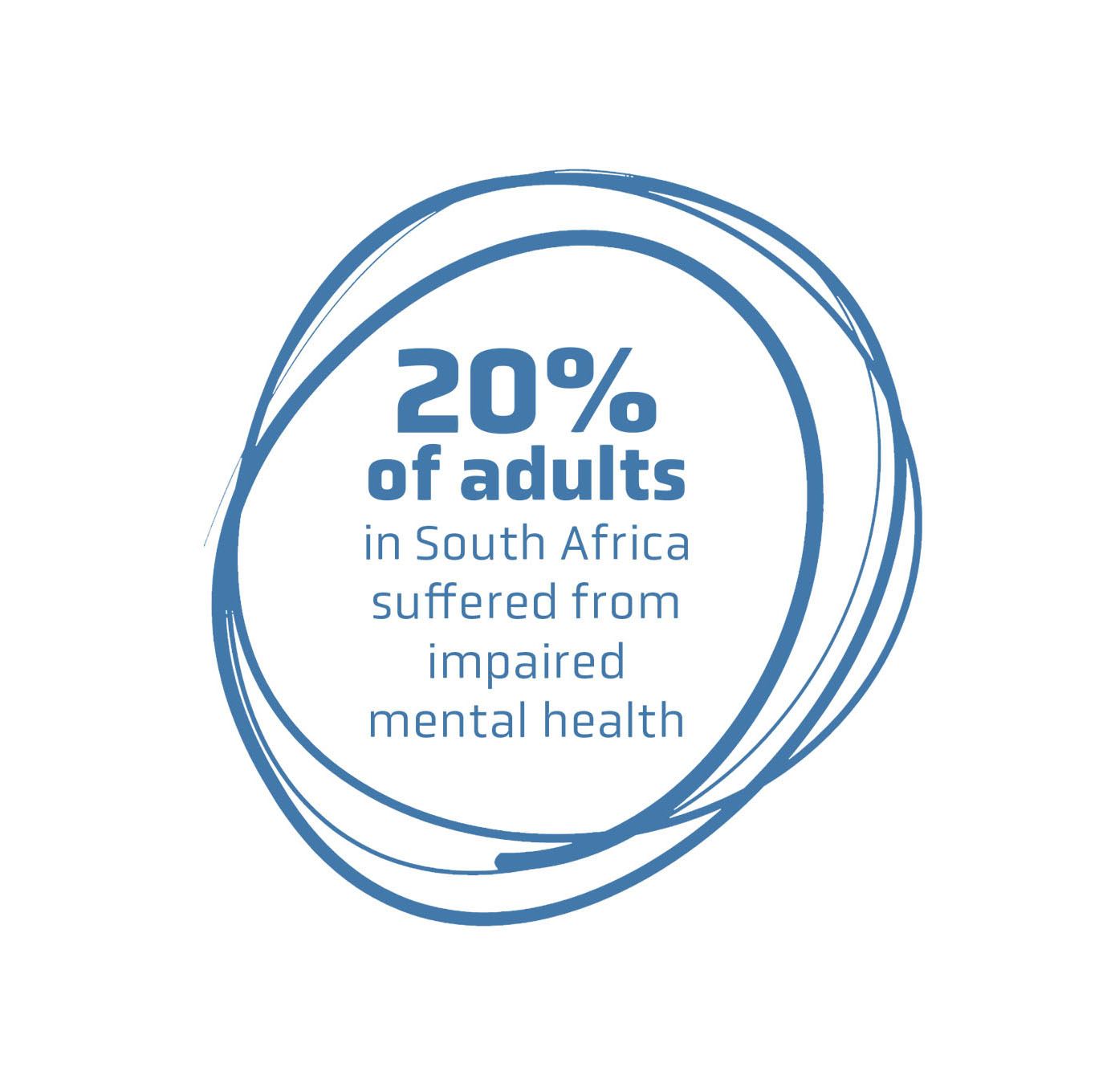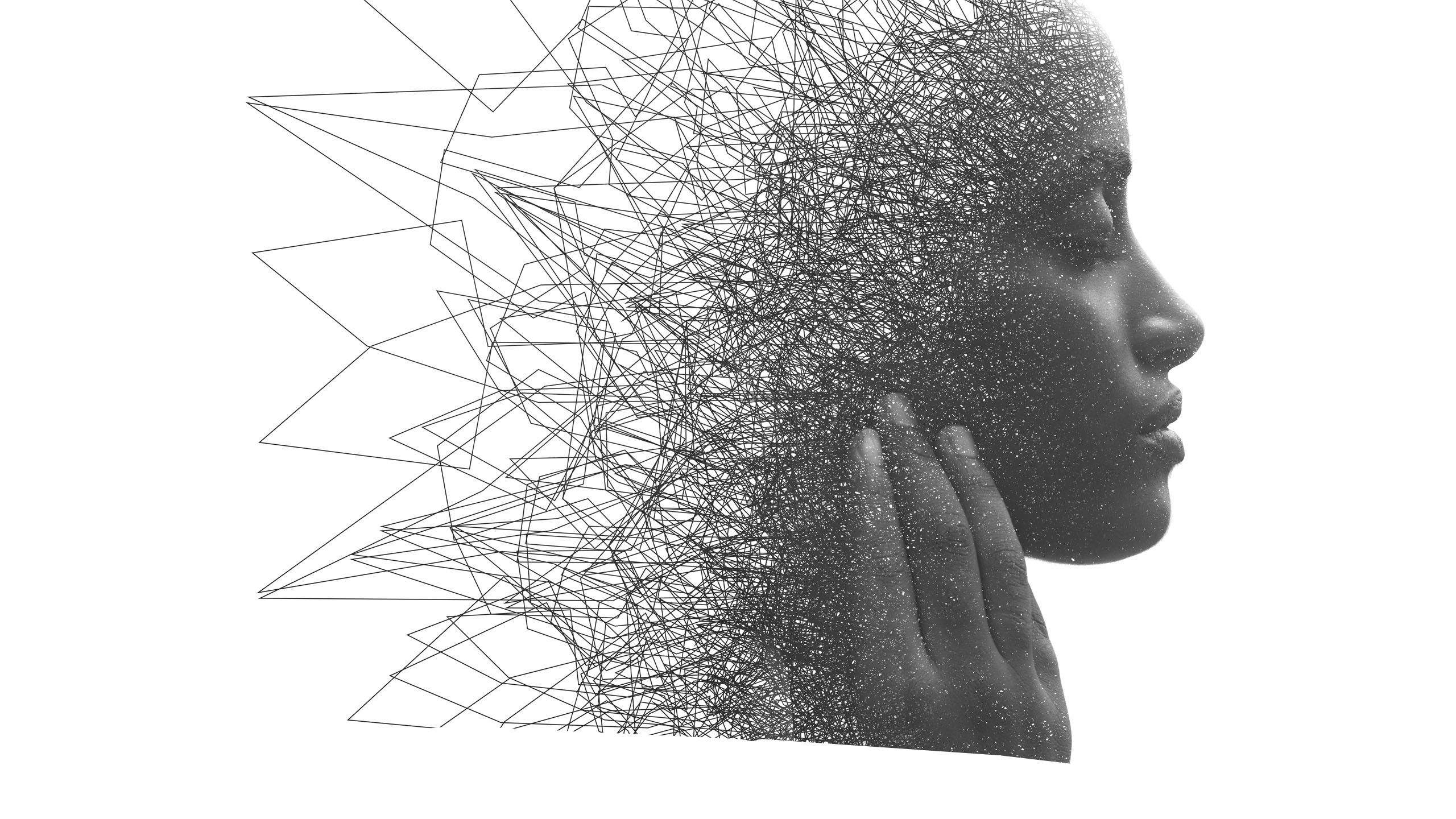
Women and depression
What considerations should be top-of-mind when treating female patients with depression?


The prevalence of mental health issues among adults in low- or middle-income countries (LMICs) is a growing concern for public health1. This is evident in South Africa, a middle-income country with significant income inequality1. A 2009 study found that nearly 20% of adults in South Africa suffered from impaired mental health, but only a small fraction of these individuals sought treatment1.
In 2013, another study revealed that the Eastern Cape, one of South Africa's poorest provinces, had the highest lifetime prevalence rate of depression, reaching a staggering 31.4%1. A study by the South African Stress and Health (SASH) study found that the prevalence of major depressive disorder (MDD) in South Africa was 9.8% across all ages, with the highest prevalence of 14.6% in the Free State province2.
Another study found that the prevalence of MDD in a human immunodeficiency virus (HIV) population group was 11.8%2. These rates are comparable to those in developed countries2. These findings suggest that major depression is a significant public health problem in South Africa2.
MAJOR DEPRESSIVE DISORDER
To be diagnosed with MDD, an individual must have five of the following symptoms, one of which must be a depressed mood or anhedonia (loss of interest in pleasurable activities) that causes social or occupational impairment3:
· Persistent low mood
· Loss of interest in activities
· Feelings of guilt or worthlessness
· Lack of energy
· Poor concentration
· Appetite changes
· Sleep disturbances
· Suicidal thoughts
A history of a manic or hypomanic episode (periods of abnormally elevated mood) must also be ruled out3. Major depressive disorder is a widely observed psychiatric condition, with a lifetime prevalence ranging from 5 to 17 percent3.
Women are affected at a double rate compared to men3. This is thought to be influenced by hormonal variations, the impact of childbirth, distinct psychosocial stressors experienced by each gender, and the behavioral model of learned helplessness3. While the typical age of onset is around 40 years old, recent surveys indicate a concerning trend of rising incidence in younger populations due to increased alcohol and substance abuse3.
WHY ARE WOMEN SUSCEPTIBLE?
The similar female-to-male prevalence ratios of MDD in developed and developing countries suggest that biological sex differences play a more significant role than socioeconomic factors in the development of this disorder4. This is supported by the fact that there is no clear evidence of a higher rate of MDD in countries where women have significantly lower socioeconomic status compared to men4.
The increased prevalence of MDD in young women is particularly evident during puberty, pregnancy, and perimenopause4. These are all times of significant hormonal fluctuation, which suggests that female hormonal changes may be a trigger for depressive episodes4.
In addition to hormonal factors, women may also be more sensitive to interpersonal relationships and other stressors than men4. This may explain why women are more likely to present with internalising symptoms of depression, such as sadness, anxiety, and withdrawal4.
While the underlying mechanisms of female depression are not fully understood, there is some evidence that hormone replacement therapy can be effective in preventing postmenopausal depression in women and that targeting female hormonal fluctuations may be a promising treatment approach4.
It must be kept in mind that women undergo a unique physiological period starting from puberty, which imposes a certain degree of physiological and life burden5. These burdens act as additional triggers, intensifying emotional fluctuations in women, and consequently increasing their vulnerability to experiencing negative emotions and a predisposition to depression compared to men5.
The evidence for the association between socio-economic factors and depression in South Africa is mixed3. However, food insecurity, defined as the inability to access a sufficient quantity of healthy food on a daily basis, has consistently been identified as a risk factor for antenatal and postnatal depression in the Western Cape3.
This is supported by the finding that 38% of households in South Africa are food insecure3. Intimate partner violence (IPV) has also been reported as a risk factor for perinatal depression in South Africa3. IPV is common in South Africa, with more than 40% of pregnant women reporting that they have experienced it3.
The association between socio-economic factors and depression is complex and likely to be mediated by several factors, including stress, social support, and access to healthcare3. Further research is needed to better understand the mechanisms underlying this association and to develop effective interventions to prevent depression in women in South Africa3.



DEPRESSION DURING PREGNANCY
Depression during pregnancy is a significant health issue, with a high prevalence and potentially serious consequences for both mother and child6. Physiological changes, hormonal fluctuations, and changes in social roles can all contribute to the development of depression during pregnancy6.
Poor sleep quality is a major risk factor for depression symptoms in late pregnancy6. This is likely due to a combination of factors, including increased night-time urination, foetal movement, and leg cramps6. As a result, pregnant women may experience shorter sleep duration and poorer sleep quality, which can lead to emotional dysregulation and depression symptoms6.
Lack of social support is another contributing factor6. Social support can buffer the effects of stress and provide a sense of belonging and connection, which are important for mental health6. Social isolation can increase the risk of depression6.
The Whooley Questions
Specific screening tools are recommended when evaluating pregnant or postpartum women for potential depression7. The two Whooley questions are a recommended initial step7. They are:
- During the past month, have you often been bothered by feeling down, depressed, or hopeless?
- During the past month, have you often been bothered by having little interest or pleasure in doing things?
A woman who answers yes to either of these questions is considered to have a positive screen for depression7. A positive screen does not necessarily mean that the woman has depression, but it does suggest that she may be at risk for depression and should be further evaluated7.
The EDPS and other screening tools
As part of a comprehensive assessment when depression is suspected, the administration of either the Edinburgh Postnatal Depression Scale (EPDS) or the Patient Health Questionnaire-9 (PHQ-9) screening questionnaires is advised, in addition to the Whooley Questions8.
In the realm of perinatal care, the 10-item Edinburgh Postnatal Depression Scale (EPDS) stands out as the most widely utilised depression screening tool8. For identification purposes, cut-off values of 10 or higher and 13 or higher are commonly employed to identify women who may be experiencing depression8.
The EPDS has demonstrated its reliability as a screening instrument for both antenatal and postnatal depression in various studies8. Extensive validation has been conducted for its applicability in diverse settings, including South Africa, with successful use in verbal administration by interviewers in English and isiXhosa8.
In the South African context, a threshold score of 11 or higher on the EPDS has exhibited a sensitivity of 80% and specificity of 76% for detecting major and minor depression when combined8. Furthermore, a subset of three EPDS items (items 3, 4, and 5, referred to as EPDS-3A) has been identified as indicative of probable anxiety in perinatal women8.
In a study of pregnant women attending a primary care antenatal clinic in South Africa, trained research assistants administered five screening tools to assess mental health: the EPDS, the PHQ-9, the Kessler Psychological Distress scale (K10), the Whooley Questions and the two-item Generalised Anxiety Disorder scale (GAD-2) 8.
Following this, a registered mental health counsellor administered the MINI Plus, a structured clinical diagnostic interview8. The five screening tools were used to identify women who may be at risk for mental health problems. The MINI Plus was then used to confirm the diagnosis of any mental health disorders8.
The EPDS was the best performing instrument for detecting MDD, while the K10 and K6 were the best performing instruments for detecting anxiety disorders8. The EPDS had the highest area under the curve (AUC) of 0.83 for detecting MDD and/or anxiety disorders8.
HOW DO WE TREAT DEPRESSION IN WOMEN?
Before diagnosing MDD, it is important to rule out other medical conditions that could be causing the symptoms9. A diagnosis having been established, the most common treatments include9:
- Psychotherapy: This can help people with MDD to understand their thoughts, feelings, and behaviours. The most common forms of psychotherapy for MDD are cognitive-behavioral therapy (CBT) and interpersonal therapy (IPT).
- Pharmacotherapy: There are a variety of different medications available, the most common being selective serotonin reuptake inhibitors (SSRIs), tricyclic antidepressants (TCAs), and monoamine oxidase inhibitors (MAOIs).
- Combination therapy: Resources permitting, people with MDD may greatly benefit from a combination of psychotherapy and pharmacotherapy.
Benzodiazepines are not recommended for the treatment of MDD9. However, they may be considered for short-term adjunctive therapy during the initial management of symptoms related to anxiety, insomnia, and agitation9.
Personal agency
Personal agency acts as a protective factor against depression, but social factors can contribute to lower levels of agency in women10. A recent study investigated how women's experiences with antidepressant treatment and recovery-supporting practices affect their sense of agency in relation to depression recovery10.
The findings revealed that antidepressants can enhance agency by alleviating depressive symptoms, empowering women to take a proactive role in their recovery10. However, prolonged antidepressant use may result in increased dependency and decreased personal agency10. Moreover, fear of withdrawal symptoms and adherence to the biochemical model of depression further weaken women's sense of personal agency regarding their recovery10.
Safety concerns in pregnancy
While it is generally preferable to avoid medication during pregnancy, the urgency of treating major depressive disorder may often outweigh potential risks to the foetus from exposure to antidepressants9. The most frequently prescribed antidepressants during pregnancy are SSRIs, followed by serotonin-norepinephrine reuptake inhibitors (SNRIs), tricyclic antidepressants (TCAs), and rarely monoamine oxidase inhibitors (MAOIs)12.
Most studies conducted on SSRIs have found no increase in malformations, but exposure to SSRIs may present a small increased risk12. Among the SSRIs, fluoxetine is the most studied, and most studies have found no association with increased risk of malformations12. However, clinicians should take into consideration its long half-life and possibility of accumulation in the neonate, and higher infant plasma levels when breastfeeding than most antidepressants12. For these reasons, it is generally not used as a first-line agent during pregnancy12.
Sertraline and citalopram are generally considered safe during pregnancy12. Composite data with sertraline demonstrated no increased risk of malformations with exposure in utero, but one study found an increased risk of omphalocele and septal defects12. Sertraline may be considered a first line choice, due to its data during pregnancy, as well as safety during lactation12.
Citalopram exposure was associated with malformation rates similar to the general population in 5 studies12. However, one study found an increased risk of anencephaly, omphalocele, and crainiosynostosis12.
Exposure to venlafaxine or duloxetine during pregnancy does not appear to increase risk of congenital abnormalities12. For first episodes of depression in postpartum women, a recommended treatment duration of 6 to 12 months is advised, while recurrent major depression may necessitate long-term antidepressant treatment9.
Regarding antidepressant use during breastfeeding, most antidepressants are considered likely safe for use9. Nevertheless, studies evaluating the effects of antidepressants during lactation have not been adequately assessed9. Consequently, the same risk-benefit considerations should be exercised when managing depression during breastfeeding, as those applied during pregnancy9.
CONCLUSION
Women suffer from depression at a much higher rate than men. This is mostly due to biological factors, in particular hormonal changes. Both psychotherapeutic and pharmacological interventions are valid, although caution must be taken when prescribing pharmacological treatments during pregnancy. Short-term antidepressant use was also found to increase a sense of personal agency among women, alleviating symptoms of MDD.
images/shutterstock.com
REFERENCES
1. Craig, A, et al, 2022. The prevalence of probable depression and probable anxiety, and associations with adverse childhood experiences and socio-demographics: A national survey in South Africa. Front. Public Health, 28 October 2022, Public Mental Health, Volume 10.
2. Mashaba, BL, et al, 2004. Screening for depression at the primary care level: Evidence for policy decision-making from a facility in Pretoria, South Africa. S Afr Fam Pract (2004). 2021; 63(1): 5217.
3. Garman, EC, et al, 2019. Perinatal depressive symptoms among low-income South African women at risk of depression: trajectories and predictors. BMC Pregnancy and Childbirth volume 19, Article number: 202.
4. Albert, PR, et al, 2015. Why is depression more prevalent in women? J Psychiatry Neurosci. 2015 Jul; 40(4): 219–221.
5. Tang, J, et al, 2022. Causes of the male-female ratio of depression based on the psychosocial factors. Front. Psychol. 13:1052702.
6. Yu, Y, et al, 2020. Prevalence of depression symptoms and its influencing factors among pregnant women in late pregnancy in urban areas of Hengyang City, Hunan Province, China: a crosssectional study. BMJ Open 2020;10:e038511.
7. Bosanquet, K, et al, 2015. Diagnostic accuracy of the Whooley questions for the identification of depression: a diagnostic meta-analysis. BMJ Open 2015;5:e008913
8. van Heyningen, T, et al, 2018. Comparison of mental health screening tools for detecting antenatal depression and anxiety disorders in South African women. PLoS ONE 13(4): e0193697.
9. Osuch, E, et al, 2017. The Pharmacological management of Depression – Update 2017. South African Family Practice 2017; 59(1):6-16.
10. Cartwright, C, et al, 2016. Personal agency in women's recovery from depression: The impact of antidepressants and women's personal efforts. Clinical Psychologist, Volume 22, Issue 1, March 2018, Pages 72-82.
11. Wichman, CL, et al, 2015. Diagnosing and Treating Depression During Pregnancy. The Primary Care Companion for CNS Disorders. 2015;17(2). DOI: 10.4088/pcc.15f01776.
12. Morris, MN, et al, 2013. Use of antidepressants during pregnancy and lactation. Mental Health Clinician (2013) 3 (2): 58–60.




